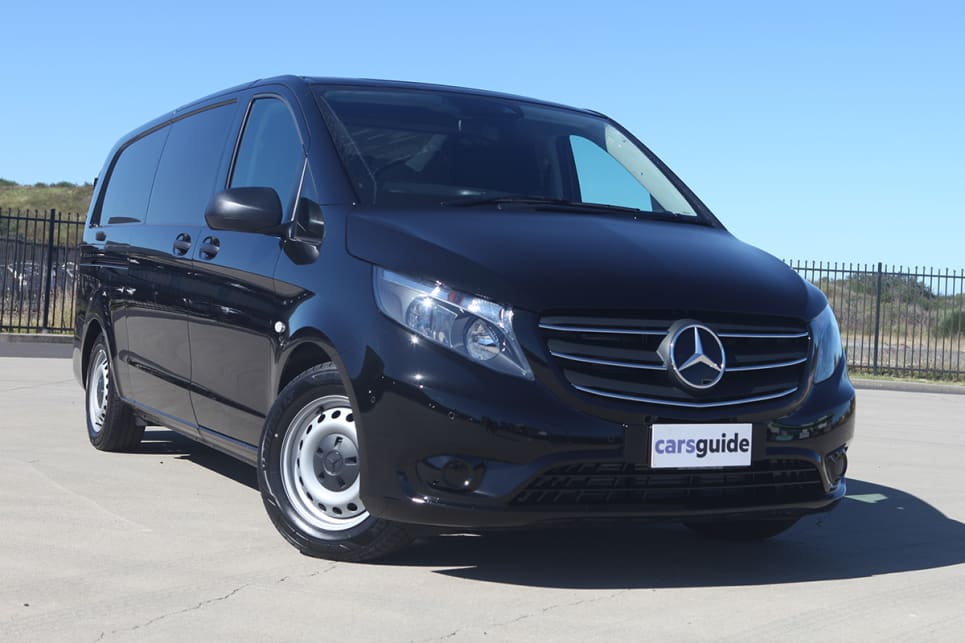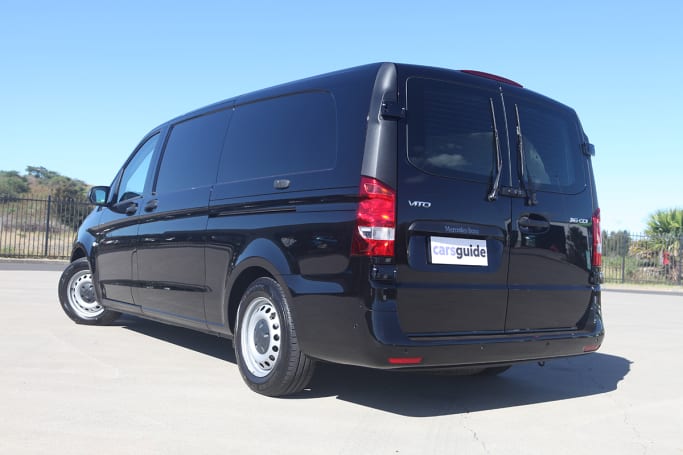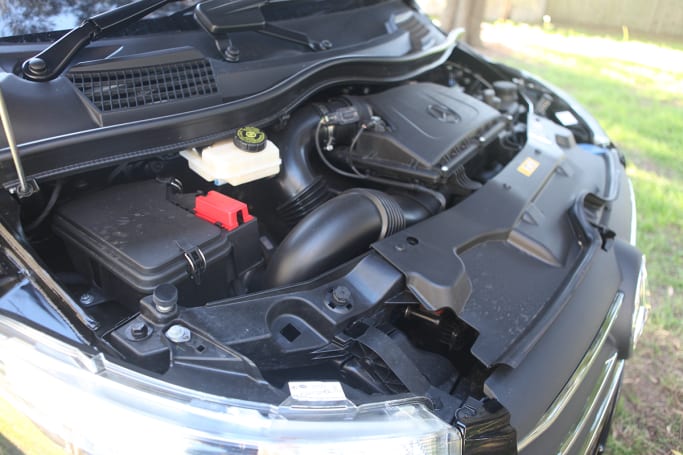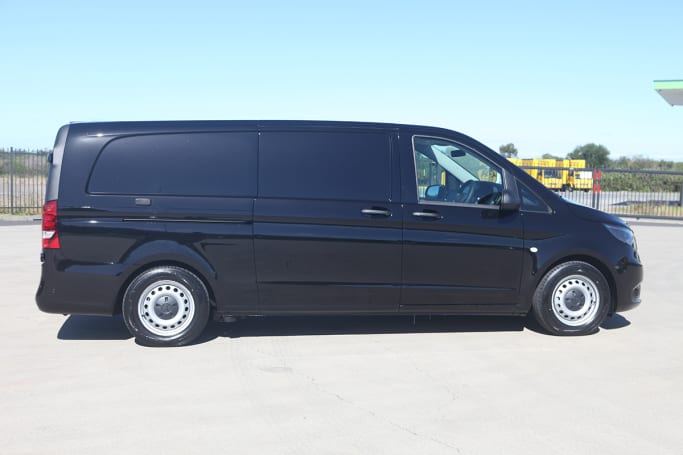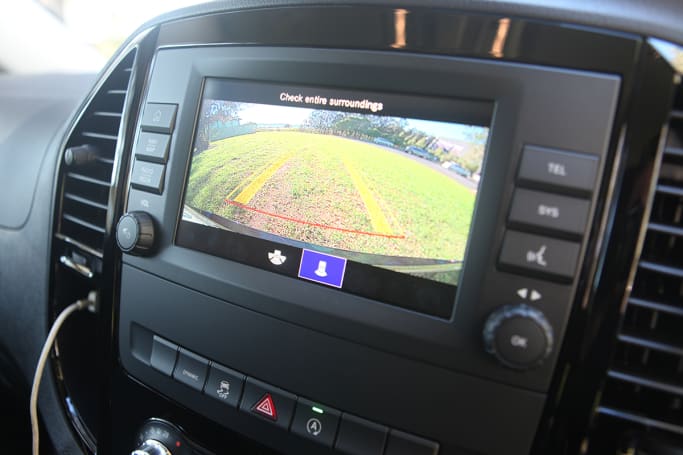Our test vehicle, a two-seater Vito 116 LWB panel van has a manufacturer recommended list price of $56,100 (excluding on-road costs) and that’s with a seven-speed automatic transmission and rear-wheel drive.
But our Vito was loaded with extras, but more about that soon.
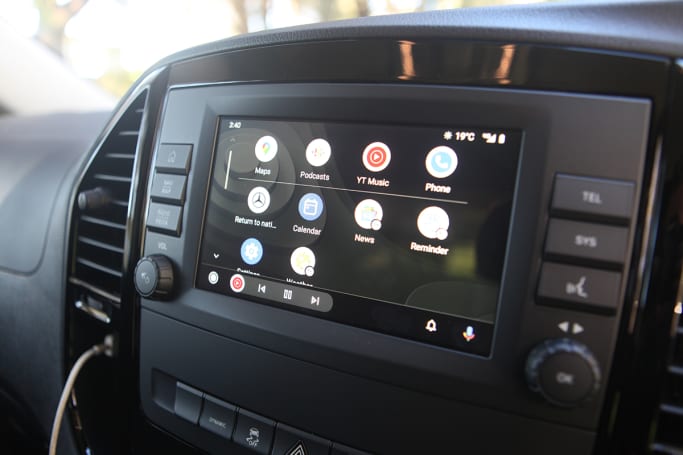
The standard features list is not insubstantial and includes, among other things, AEB, a 7.0-inch multimedia touchscreen with Apple CarPlay and Android Auto connectivity, Bluetooth 3.0 handsfree and media streaming, digital radio, multifunction leather-covered steering wheel, high gloss black trim, chrome interior package (air vents, aircon dials, inside door handles and surrounds), 16-inch steel wheels (with a steel spare), engine stop-start function, and more.
Our test vehicle’s $8715 worth of accessories fitted are colour-coded front and rear bumpers ($600), Audio 40 with satellite navigation ($700), Active Distance Assist ($1500), cargo solutions pack ($3800: Comfort front passenger bench seat, interior panelling to roof height in load compartment, full-width partition wall with window, wood flooring, sidewall tie-down rails, LED lighting strip in load compartment, tailgate), Comfort seats with lumbar support package ($600), plus Obsidian Black metallic paint ($1515).
So, our test vehicle’s ultimate price as tested ended up at $64,815 (excluding on-road costs).

If you’re interested other key option include a full bulkhead with fixed window ($600), barn doors, opening to sidewall ($990), digital rear-view mirror ($900), and LED Intelligent Light System with High Beam Assist Plus ($3060).
Non-metallic paint options are Arctic White, Jupiter Red, Steel Blue, Broom Yellow, Pebble Grey and Granite Green.
Metallic paint options are Dark Graphite Grey, Selenite Grey, Brilliant Silver, Rock Crystal White, Cavansite Blue, Obsidian Black, and Hyacinth Red.


